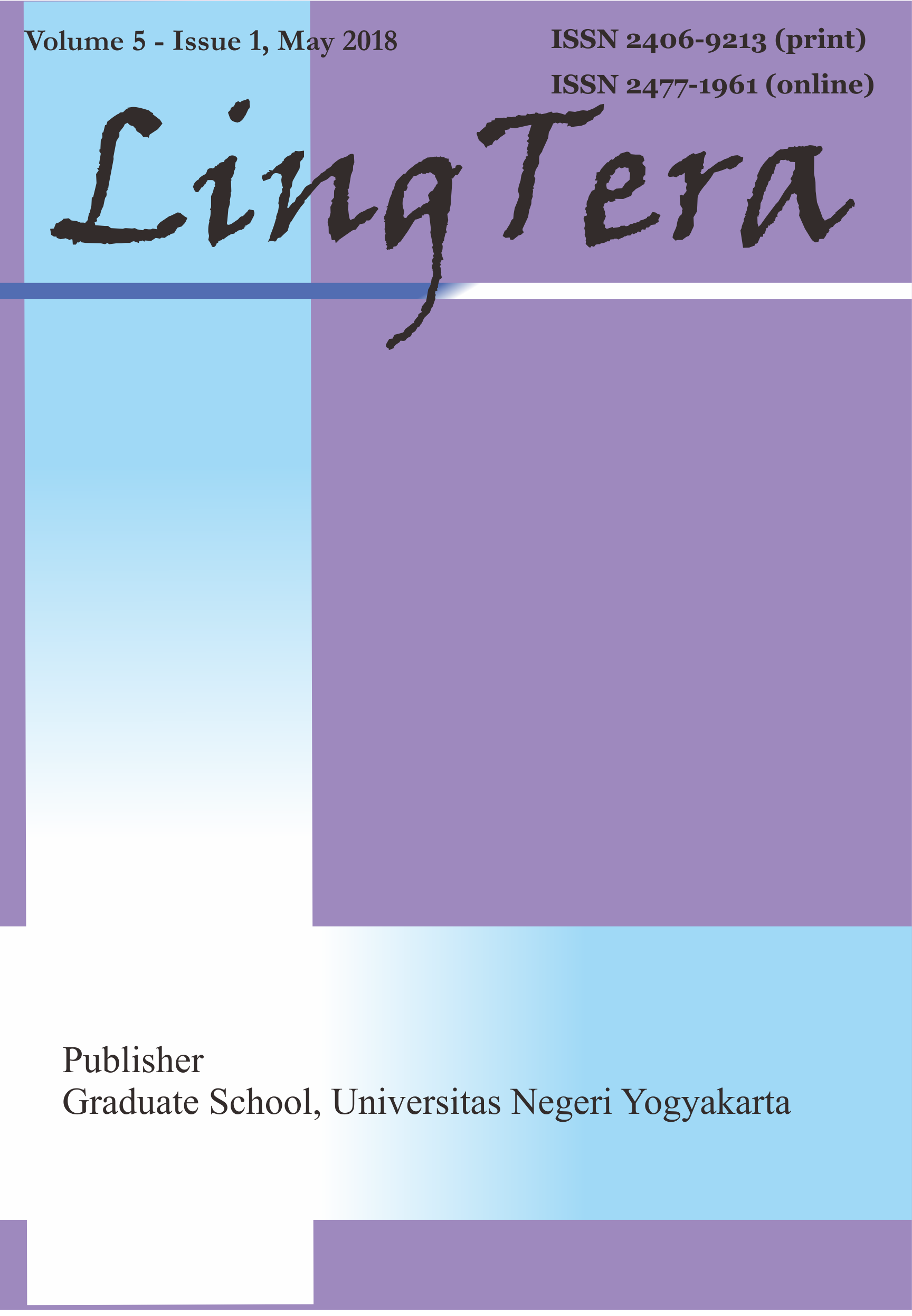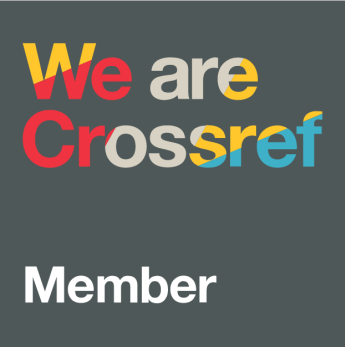A study of translation techniques in the book of "Banal Aesthetics & Critical Spiritualism" by Erik Prasetya and Ayu Utami
DOI:
https://doi.org/10.21831/lt.v5i1.17984Keywords:
translation, techniques, banal aesthetic, critical spiritualismAbstract
The present study was aimed at describing the translation techniques used by the translator in the books of Banal Aesthetics & Critical Spiritualism written by Erik Prasetya & Ayu Utami. Descriptive qualitative approach was employed through collecting the data related to the concerned and researched problems. The theory of translation technique suggested by Molina and Albir became the reference to classify the translation techniques used in the translation of the books of Banal Aesthetics & Critical Spiritualism. Document analysis and literature review were employed to collect the data. The analysis results indicated that there were 15 types of translation techniques used from 18 ones as what is suggested by Molina and Albir. The five most widely used techniques of translation techniques in the books of Banal Aesthetics & Critical Spiritualism were: literal translation (33, 46%), modulation (14.96%), reduction (14.56%), established equivalent (11.02%), and borrowing (9.84%). Meanwhile, three translation techniques that were not used are: calque, substitution, and variation.
References
Baker, M. (2001). Routledge encyclopedia of translation studies. London: Routledge.
Catford, M. (1974). A linguistik theory of translation. London: Oxford.
Cross, M. (2007). Literal translation of patents. Retrieved from http://patenttranslations.com/Publications/ATAPatentTranslatorsHandbook-Martin%20Cross.pdf
Duff, A. (1981). The third language: recurrent problems of translation into English. England: Pergamon Press.
Hatim, B., & Mason, I. (2005). The translator as communicator. Routledge.
Heshmatifar, Z. & Biria, R. (2015). Exploring the translation strategies utilized for the rendition of economic terms from English into Persian. Journal of Applied Linguistics and Language Research Volume 2, Issue 8, 2015, (111-127).
Hoed. B. (2006). Penerjemahan dan kebudayaan. Jakarta: Pustaka Jaya.
KereviÄienÄ—, J. (2011). Grammatical compression in film translation. Vertimo Studijos. ISSN 2029-7033. (71-81).
Larson, M.L. (1991). Penerjemahan berdasarkan makna: Pedoman untuk pemadanan antarbahasa. Jakarta: Penerbit Arcan.
Molina, L. & Albir, A.H. (2002). Translation techniques revisited: A dynamic and functionalist approach. Meta: Translators' Journal, XLVIL No.4, (498-512).
Munday, J. (2001). Introducing translation studies: Theories and applications. New York: Routledge.
Newmark, P. (1988). A textbook of translation. Hertfordshire: Prentice Hall.
Nida, E. A. & Taber, C.R. (1976). Language translation and translation. California: Stanford University.
Nida, E. A. & Taber, C. R. (1982). The theory and practice of translation. Leiden: E.J.Brill.
Satriadi, N.P. (2014). An analysis of translating procedures on Sony Ericsson live with walkman series startup guide. Journal of English and Education, 2(1), (39-48).
Vinay, J. P., & Darbelnet, J. (1995). Comparative stylistics of French and English: A methodology for translation (Vol. 11). John Benjamins Publishing.Downloads
Published
How to Cite
Issue
Section
Citation Check
License
LingTera allows readers to read, download, copy, distribute, print, search, or link to its articles' full texts and allows readers to use them for any other lawful purpose. The journal allows the author(s) to hold the copyright without restrictions. Finally, the journal allows the author(s) to retain publishing rights without restrictions.
- Authors are allowed to archive their submitted articles in an open-access repository.
- Authors are allowed to archive the final published article in an open-access repository with an acknowledgment of its initial publication in this journal.

Psychology, Evaluation, and Technology in Educational Research is licensed under a Creative Commons Attribution-ShareAlike 4.0 International License.
Based on a work at https://petier.org/index.php/PETIER.










